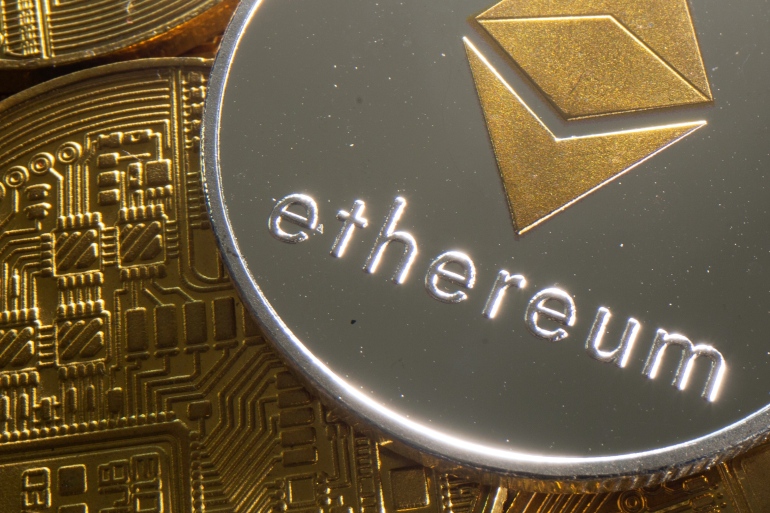So-called “Ethereum killers” are building momentum, including a growing share of the NFT market. Here’s a closer look at four of the top competitors.
New crypto investors have likely noticed the drastic price drops and bearish sentiment detectable throughout the crypto market, with bitcoin at a six-month low and altcoins not far behind.
Yet crypto industry insiders remain optimistic – at least from a long-term perspective – and embrace this moment as somewhat of a race to see which blockchain projects survive and become leaders in a decentralized future.
This article originally appeared in Crypto for Advisors, CoinDesk’s weekly newsletter defining crypto, digital assets, and the future of finance. Sign up here to receive it in your inbox every Thursday.
Among the most epic rivalries in the wild, wild crypto west is those between Ethereum – the original smart contract blockchain – and the projects created to improve upon Ethereum’s technology.
Ethereum’s native currency, Ether (ETH), had a market cap of roughly $370.5 billion at the time of this writing, and it sits at No. 2 on the CoinDesk 20, just below bitcoin. The Ethereum network is scheduling planned upgrades in 2022, and some say the new version, Ethereum 2.0, will offer improved processing times, lower fees and more scalability.
Until then, so-called “Ethereum killers” are building up momentum and occupying a growing share of the non-fungible token (NFT) market, although Ethereum still maintains about 80% of NFT transactions. Notably, these new blockchains seem to be doing it all with faster, environmentally cleaner technology and with lower transaction fees (aka “gas fees”), making some wonder how much longer Ethereum can hold onto its first-mover advantage.https://b4c7cd95397105537bd669c9aaff6420.safeframe.googlesyndication.com/safeframe/1-0-38/html/container.html
“The year 2022 will be the battle for Web 3 and the next evolution of the internet,” says Ian Balina, founder of the crypto analytics firm Token Metrics. “Look for a heated race.”
So how do Ethereum’s competitors stack up?
Ethereum’s top competitors
“Ethereum is the clear leader,” Balina tells CoinDesk, “but these other blockchains are on-boarding new users at a faster pace due to Ethereum’s high gas fees and low transaction speed.”
Four of the top “Ethereum killers” today are Solana, Cardano, Tezos, and Polkadot. Let’s take a look at each.
Solana
Currently at No. 5 on the CoinDesk 20, Solana’s native currency, SOL, had a market cap of $62.3 billion at the time of this writing.
Solana uses “proof-of-history” to validate transactions, as opposed to Ethereum’s proof-of-work consensus model. Large institutions such as JPMorgan and Bank of America have expressed their confidence in Solana, even saying it could become the “Visa of the digital asset ecosystem.”
Solana is also backed by top venture capital firm Andreessen Horowitz – which isn’t always considered a good thing in the world of Web 3. Too much institutional interest could raise the eyebrows of decentralization diehards. Meanwhile, Ethereum has a loyal user base that many suspects won’t abandon it.
Nonetheless, Solana transacts at lightning speeds, and fees equate to a fraction of a cent per transaction. Since launching in 2020, it has experienced strong adoption and settled more than 50 billion transactions. Perhaps the most appropriate way to view Solana is as a potentially more mainstream Ethereum.
Cardano
Cardano is a contender for a more environmentally sustainable alternative to Ethereum. Its native currency, ADA, had about a $39.52 billion market cap at the time of this writing. Crypto insiders are keeping an eye on Cadano, which has performed modestly, because of the recent release of Cardano’s first decentralized finance (DeFi) exchange, SundaeSwap.
Time will tell whether Cardano can unseat Ethereum, or if similar learning curves will occur as more users transact on the Cardano blockchain.
Tezos
Coming fast on the scene is Tezos, another smart contract-capable blockchain used to issue new digital assets and create decentralized applications, or dapps. XTZ is the native cryptocurrency of Tezos. The currency had a market cap of $3.6 billion at the time of this writing.
Several notable projects have been launched on Tezos, including those in the fashion, music, gaming, and art industries. Tezos was one of the first networks to use a proof-of-stake (PoS) consensus mechanism. It also has unique governance features built-in: Participants who stake at least 8,000 tokens on the network receive voting rights, which allow them to have a say in its governance. Tezos is also known for its app security.
Polkadot
DOT is the native cryptocurrency of the Polkadot platform. It had a market cap of $25.72 billion at the time of this writing.
Polkadot is known for a feature called “interoperability.” Its infrastructure connects several blockchains together into a single network, enabling them to exchange data without compromising their security. Interoperability is therefore essential for the future of Web 3, in which services, products, and currency will move throughout what many hope will be a decentralized digital ecosystem. Robust interoperability also creates the possibility for cross-chain collaboration, potentially leading to more collaboration among protocols.
Bottom line
Among smart contract blockchains, Ethereum still occupies the hearts of Web 3 veterans and poses a strong possibility for widespread adoption. However, investors and advisors alike should stay informed about newer smart contract blockchains that present innovative solutions to Ethereum’s shortcomings. As the demand for new dapps and DeFi protocols increases, everyone will be looking for the right infrastructure to use to build the future of Web 3.
DISCLOSURE This is for informational purposes only.

